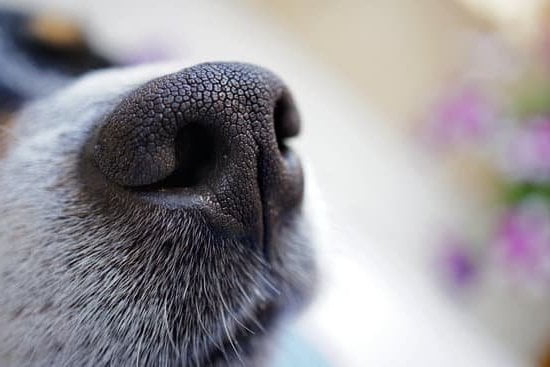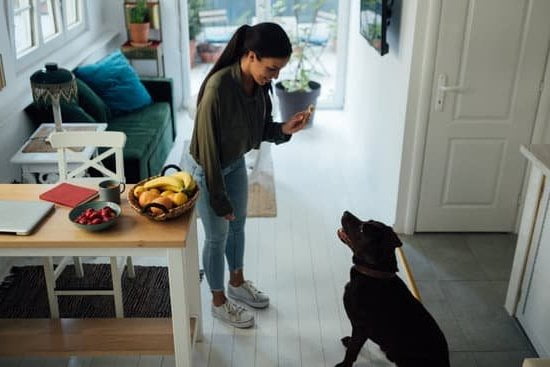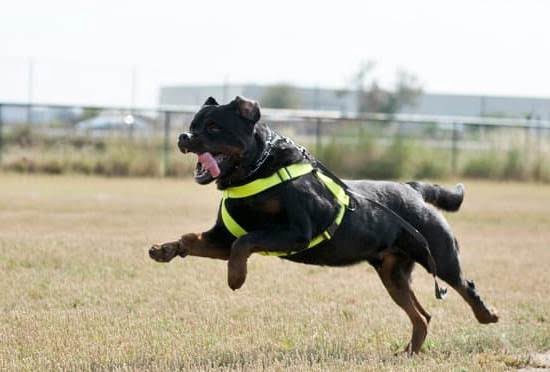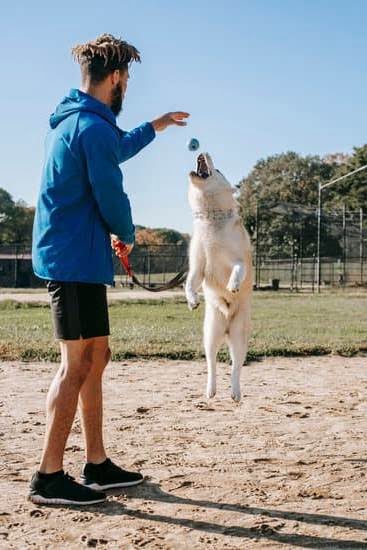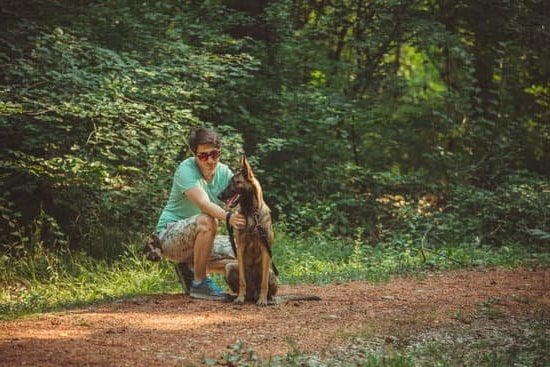Can you train an older dog to like cats? This question has long concerned dog owners who wish to add a feline companion to their household. It is often believed that once a dog reaches a certain age, their behavior and preferences are set in stone. However, with patience, persistence, and the right techniques, it is possible to foster a positive relationship between an older dog and a cat.
Training an older dog to like cats brings its own unique set of challenges. Many older dogs have established behaviors and patterns that may make them less receptive to new introductions or changes in their environment. Additionally, certain breeds may have strong prey instincts that can pose potential risks when introducing them to smaller animals. These factors can make the process more complex than training a younger dog or puppy.
Before embarking on the journey of training an older dog to like cats, it is crucial to assess their personality and history. Understanding your dog’s temperament, previous experiences with other animals, and any potential triggers will help you tailor your training approach accordingly. It is also important to consider their current level of socialization and if they have had positive or negative encounters with cats in the past.
In the following sections, we will explore various techniques and strategies for successfully introducing an older dog to a cat. From slow and gradual introductions to addressing aggression and fear, this article aims to provide valuable insights into the process of training an older dog to embrace a feline companion.
By utilizing patience, persistence, rewards, positive reinforcement, and potentially seeking professional help when needed, you can create harmony within your household and build a loving bond between your older dog and cat.
Assessing Your Older Dog’s Personality and History
When considering training an older dog to like cats, it is important to assess your dog’s personality and history to determine if it is possible for them to develop a positive relationship with cats. While it may be more challenging to train an older dog compared to a younger one, it is not impossible with the right approach.
One of the first things you should consider is your dog’s past experiences with cats. If they have had negative interactions or have previously displayed aggressive behavior towards cats, it might require more time and effort to help them overcome these issues. On the other hand, if your older dog has had positive experiences with cats in the past, they may be more open to building a relationship.
Personality traits of your older dog also play a significant role in determining their ability to get along with cats. Some dogs naturally have a higher prey drive or are more reactive towards small animals, making it more difficult for them to coexist with cats. However, if your dog has shown calmness and tolerance towards other animals in the past, there is potential for them to form a positive bond with a cat.
To assess your older dog’s personality and history accurately, it can be helpful to consult with a professional trainer or animal behaviorist who specializes in working with older dogs. They can provide guidance on evaluating your dog’s behavior and help create a training plan tailored specifically to their needs.
| Factors | Influence |
|---|---|
| Past experiences | Determines how receptive they might be towards cats |
| Personality traits | Affects their natural inclination and ability to tolerate cats |
| Prey drive | Higher prey drive may pose challenges in training and coexistence |
| Reactiveness | Dogs with higher reactivity levels may require more time and patience in training |
Assessing your older dog’s personality and history is a crucial step in determining if it is possible for them to like cats. By understanding these factors, you can develop a customized training plan and increase the likelihood of successfully fostering a positive relationship between your older dog and a cat.
The Importance of Slow and Gradual Introductions
Introducing an older dog to a cat can be a challenging process, but with the right approach and patience, it is possible to foster a positive relationship between the two. One of the most crucial aspects of this introduction is taking it slow and gradual. This section will provide tips for a successful initial meeting between your older dog and cat.
When introducing an older dog to a cat, it is essential to understand that each animal has its own personality and history that can affect their behavior during the introduction. Some dogs may have had negative experiences or interactions with cats in the past, while others may have no prior exposure to them at all. Therefore, it is important to assess your older dog’s personality and history before proceeding with the introduction.
Here are some tips to help make the initial meeting successful:
- Create separate safe spaces: Before bringing the cat into the picture, ensure that both animals have their own secluded areas where they feel secure and comfortable. This will give them a place to retreat if they feel overwhelmed or need some time alone.
- Use baby gates or crates: Baby gates or crates can be useful tools during the initial meeting. They allow both animals to see and smell each other without direct physical contact, reducing stress levels on both sides. Gradually increase their exposure to each other by shortening the distance between them over time.
- Gradual scent exchange: Start by swapping blankets or toys between your dog and cat so they can become familiar with each other’s scents without any direct contact. This helps build positive associations before they physically meet.
Remember, every dog-cat introduction is unique, and it may take multiple sessions before they can safely coexist in the same space without any issues. Patience is key throughout this process as it allows both animals to adjust at their own pace. By following these tips, you can increase the likelihood of a successful initial meeting between your older dog and cat.
| Tips for a Successful Initial Meeting |
|---|
| 1. Create separate safe spaces |
| 2. Use baby gates or crates |
| 3. Gradual scent exchange |
Can You Teach an Old Dog New Tricks? Exploring the Training Techniques for Fostering a Positive Relationship
Training an older dog to like cats can be a challenging endeavor, but with the right techniques and approach, it is definitely possible to foster a positive relationship between them. This section will explore various training techniques that can be employed to help your older dog develop a liking for cats.
- Gradual Exposure: One of the most crucial aspects of training an older dog to like cats is ensuring that introductions are done slowly and gradually. Start by keeping your dog on a leash during initial encounters, allowing them to observe the cat from a safe distance. Reward your dog with treats and praise for any calm and relaxed behavior. Over time, gradually decrease the distance between them while closely monitoring their reactions.
- Positive Reinforcement: Incorporating positive reinforcement techniques is key in encouraging your older dog’s progress in accepting and eventually liking cats. Whenever your dog displays desirable behaviors, such as remaining calm or showing curiosity towards the cat, reward them with treats or verbal praise. This positive association will help them build a more positive perception of cats.
- Counter Conditioning: If your older dog has had negative experiences or displays fear or aggression towards cats, counter conditioning can be effective in changing their emotional response. Pairing the presence of a cat with something pleasant for your dog, such as their favorite treats or toys, can help reshape their association with feline companions and foster a more positive relationship over time.
By employing these training techniques consistently and patiently, you can increase the likelihood of success in fostering a positive relationship between your older dog and cats. It’s important to note that every dog is different, so it may take varying amounts of time for them to warm up to each other. In the next section, we will delve into addressing aggression and fear specifically when introducing an older dog to cats.
Addressing Aggression and Fear
When training an older dog to like cats, it is important to address any aggression or fear issues that may arise. Dogs who have previously had negative experiences with cats or who were never exposed to them may exhibit aggression or fear towards feline companions. Fortunately, there are strategies that can help minimize tension and promote harmony between your older dog and the new cat.
- Gradual Exposure: One effective strategy is to gradually expose your older dog to the presence of a cat in a controlled and supervised environment. Begin by keeping them separated but within sight of each other through a baby gate or a crate.
This allows them to observe each other’s behavior without direct contact, reducing the likelihood of aggressive reactions. Over time, if both animals appear comfortable, you can move on to supervised face-to-face interactions. - Positive Reinforcement: Use positive reinforcement techniques during these gradual introductions. Reward your dog for calm and non-aggressive behavior while in the presence of the cat. Treats, praise, and affection can all be used as rewards for desirable behavior, helping your older dog associate the presence of the cat with positive experiences.
- Desensitization: If your older dog shows signs of fear or anxiety towards cats, desensitization techniques can be helpful in reducing their stress levels. This involves exposing your dog to low-level stimuli associated with cats while ensuring they remain calm and relaxed through positive reinforcement. Gradually increase the exposure intensity over time until your dog becomes comfortable being in close proximity to a cat.
- Creating Safe Spaces: Providing separate safe spaces for both your dog and cat is essential for maintaining peace in the household. Set up designated areas where each animal can retreat when they need space away from the other. This ensures that both animals feel secure and reduces the risk of confrontations.
By addressing aggression and fear in a thoughtful and patient manner, you can help your older dog overcome their aversion towards cats. However, it is important to note that not all dogs may be able to completely eliminate their negative emotions towards cats.
Some older dogs may simply tolerate the presence of a cat rather than actively seek out their company. It is crucial to have realistic expectations and prioritize the safety and well-being of both animals above all else.
Patience and Persistence
Training an older dog to like cats can be a challenging process that requires patience and persistence. It is important to remember that every dog is unique, and their willingness to accept cats may depend on their individual personality and past experiences. However, with time and dedication, it is possible to foster a positive relationship between your older dog and a new feline companion.
Understanding the Importance of Patience
When working with an older dog, it is crucial to have realistic expectations and understand that change may not happen overnight. Dogs are creatures of habit, and they may have formed certain behaviors or beliefs over many years. It can take time for them to unlearn negative associations or fears they have developed towards cats. Patience is key during this process as it allows you to work at your dog’s pace and avoid overwhelming them.
Consistency: The Power of Persistence
Consistency in training is vital when introducing an older dog to cats. It is essential to establish clear boundaries and consistently reinforce positive behavior while discouraging unwanted actions. By persistently using the same training techniques, commands, and rewards, you can provide clarity for your older dog and help them understand what behavior is expected of them.
Bonding Through Daily Interactions
Building a strong bond between your dog and cat requires regular interactions that promote positive associations. Encourage moments of calm coexistence by allowing supervised interactions between them each day. Start with short periods together in a controlled environment where both animals feel safe. Gradually increase the duration as they become more comfortable with each other’s presence. Positive experiences through playtime or treats during these interactions can help form a connection based on trust and enjoyment.
In summary, successful training and bonding between an older dog and cat require patience, persistence, consistency, and positive reinforcement techniques. Understanding that change takes time will help manage expectations while ensuring a gradual introduction process. By maintaining consistency in training methods and providing daily opportunities for positive interactions, you can increase the likelihood of a harmonious relationship between your older dog and cat.
Building Positive Associations
Understanding the Importance of Positive Associations
When it comes to training an older dog to like cats, building positive associations is crucial. By using rewards and positive reinforcement techniques during introductions, you can help your dog develop a positive perception of cats.
Positive associations work by pairing something enjoyable with something that may initially be perceived as unpleasant or unfamiliar. In the case of an older dog being introduced to cats, creating positive associations helps them associate the presence of cats with something pleasant like treats, praise, or their favorite toys. This approach can help shift their mindset from fear or aggression towards acceptance and even enjoyment.
Implementing Rewards and Positive Reinforcement Techniques
To successfully build positive associations between your older dog and cats, consider implementing the following techniques:
- Treats and Food: Use irresistible treats or small portions of your dog’s regular meals during the introduction process. Whenever your dog displays calm behavior around the cat or shows signs of curiosity without aggression, reward them with a treat. Gradually increase the amount of time they spend together while continuing to provide treats for desirable behavior.
- Verbal Praise: Alongside treats, verbal praise can reinforce positive behaviors during interactions with your cat. Offer enthusiastic praise when your dog remains calm or follows commands such as “sit” or “stay” in the presence of the cat.
- Playtime and Toys: Encourage playtime by offering toys that your dog finds engaging and rewarding. Use these toys to distract them from any anxious or aggressive behavior towards the cat. Over time, this will help redirect their focus towards play and create a more positive association with their feline companion.
- Enrichment Activities: Engage both your dog and cat in enriching activities together, such as having supervised play sessions with interactive toys or providing puzzle feeders for mental stimulation. These activities not only promote positive associations but also encourage bonding between the two animals.
Consistency and Patience
Building positive associations takes time and patience. It’s important to be consistent with your training approach and provide your older dog with ample opportunities to engage in positive interactions with cats. Remember to keep the sessions short initially, gradually increasing their duration as your dog becomes more comfortable and relaxed around the cat.
If at any point during the introduction process, you notice signs of fear or aggression, do not punish your dog. Instead, take a step back and reassess the situation. Consult with a professional trainer or behaviorist who can guide you through this process.
By utilizing rewards and positive reinforcement techniques during introductions, you can help your older dog develop a liking for cats over time. Keep in mind that each individual dog is different, so it’s essential to tailor your training approach based on their unique needs and personality traits. With consistency, patience, and appropriate guidance, you can build a harmonious relationship between your older dog and cat.
Managing Your Home Environment
Creating a harmonious home environment for both your older dog and cat is crucial when trying to train an older dog to like cats. By establishing designated areas and creating safe spaces for each pet, you can minimize potential conflicts and promote a positive relationship between them.
One effective strategy is to create separate sleeping and resting areas for your dog and cat. This allows each pet to have their own space where they can feel comfortable and secure.
Consider providing a cozy bed or crate for your dog in a quiet area of the house, ensuring it has privacy from the cat. Similarly, provide a separate area for your cat with their litter box, scratching post, and a comfortable bed or perch away from the reach of the dog.
In addition to separate sleeping areas, it is important to establish vertical spaces for your cat. Cats feel safe when they are up high because it provides them with an elevated view of their surroundings. Install shelves or provide tall furniture that allows your cat to climb and perch at various heights. This not only gives them an escape route from the dog but also fulfills their natural instinct to be in high places.
Another essential aspect of managing your home environment is controlling access between your dog and cat. Use baby gates or install doors with pet doors to create physical barriers that prevent unwanted interactions until both pets are more comfortable with each other’s presence. Gradually introduce supervised interactions through controlled openings such as cracked doors or gates with small gaps, allowing visual contact without direct physical access.
Overall, by creating safe spaces and managing the home environment effectively, you can provide both your older dog and cat with their own territories where they feel secure. This allows them to gradually become accustomed to each other’s presence without feeling threatened or overwhelmed, ultimately facilitating a positive bonding experience between them.
Seeking Professional Help
While it is possible to train an older dog to like cats on your own, there may be instances where seeking professional help can greatly assist in the process. A trainer or behaviorist can provide valuable expertise, guidance, and support to ensure a successful transition and harmonious relationship between your dog and cat.
One situation where hiring a trainer or behaviorist may be necessary is when your older dog exhibits aggressive behavior towards cats. Aggression can manifest in various ways, such as growling, barking, lunging, or even attacking. In these cases, it is important to prioritize safety for both the dog and cat and seek professional help. A trainer or behaviorist can assess the underlying reasons for aggression and develop a tailored training plan to address the issue effectively.
Another instance where professional assistance may be beneficial is when your older dog has a history of fear towards cats. Fearful behaviors can include trembling, hiding, cowering, excessive barking, or attempting to escape when in close proximity to cats.
It is crucial to address this fear in a gentle and supportive manner to prevent any negative experiences from further ingraining fear responses. A trainer or behaviorist can help you create a structured training program that gradually exposes your dog to cats while building positive associations.
Consider consulting with a professional if you are unsure about how to correctly introduce your older dog to a new cat or if you have attempted introductions multiple times without success. A trainer or behaviorist will be able to assess the specific dynamics between your dog and cat and tailor an introduction plan suited to their individual needs. They can also offer advice on managing any initial conflicts that may arise during the introduction process.
In summary, if you are encountering challenges while training your older dog to like cats or if there are issues of aggression or fear present, it may be time to seek professional help. Trainers and behaviorists have the knowledge, experience, and resources to guide you through the process and ensure a successful and positive relationship between your dog and cat.
Recognizing when assistance is needed and reaching out for professional support can greatly increase your chances of fostering a loving bond between your older dog and new feline companion.
| Situation | When to Consider Hiring a Trainer or Behaviorist |
|---|---|
| Aggressive behavior towards cats | If your older dog exhibits aggression such as growling, barking, lunging, or attacking towards cats. |
| Fearful behavior towards cats | If your older dog shows signs of fear such as trembling, hiding, cowering, excessive barking, or attempting to escape when in proximity to cats. |
| Challenges with introductions | If you are unsure about how to correctly introduce your older dog to a new cat or if previous introductions have been unsuccessful. |
Real-life Success Stories
Overcoming Initial Challenges
One inspiring success story involves a 10-year-old Labrador Retriever named Max and his owner, Sarah. Max had always displayed a strong prey drive and would become highly reactive around small animals, including cats. However, Sarah was determined to help Max overcome this behavior and learn to coexist peacefully with her two cats.
Sarah started by implementing gradual introductions, allowing Max and the cats to sniff each other’s scents through closed doors before introducing them face-to-face. Through consistent positive reinforcement techniques, such as rewarding Max with treats and praise for calm behavior around the cats, their interactions began to improve over time. With patience and persistence, Max eventually learned to tolerate the presence of the cats in his home and even started showing signs of enjoying their company.
Promoting Harmony through Training
Another heartwarming success story involves an 8-year-old mixed breed dog named Bella and her owner, Mark. Bella had previously shown fear-based aggression towards cats due to past negative experiences. Mark sought guidance from a professional trainer who specialized in behavior modification.
The trainer introduced a systematic desensitization program, gradually exposing Bella to the sight and scent of cats in controlled environments. Mark also worked on reinforcing positive behaviors with rewards and praised Bella for remaining calm during these interactions. As the training progressed, Bella’s fear decreased, and her aggression towards the cats diminished significantly.
Achieving Coexistence
One remarkable success story features an 11-year-old Shih Tzu named Lily and her owner, Emily. Lily had always exhibited territorial behavior towards other animals in their household but had never been exposed to cats before. Emily introduced Lily to her new cat sibling using slow introductions in neutral territory.
Emily diligently supervised their interactions, ensuring that Lily remained calm and rewarding her for positive behavior, such as sitting or lying down near the cat without displaying aggression. Over time, Lily and the cat began to establish a mutual understanding and developed a close bond. They now spend their days lounging together and even groom each other.
These real-life success stories demonstrate that with patience, proper training techniques, and gradual introductions, older dogs can learn to like cats. While each dog’s journey may be unique, these inspiring tales provide hope for dog owners who wish to foster positive relationships between their furry companions.
Conclusion
In conclusion, while training an older dog to like cats may present its challenges, it is certainly possible with the right approach and patience. It is important to assess your dog’s personality and history to determine if they are a suitable candidate for this type of training. Slow and gradual introductions are crucial for a successful initial meeting between your dog and cat, as it allows them to become familiar with each other in a controlled and safe manner.
Training techniques that focus on positive reinforcement and building positive associations can be effective in fostering a harmonious relationship between your dog and cat. Addressing any aggression or fear that may arise during the training process is essential, and strategies should be implemented to minimize tension and promote harmony.
Both patience and persistence are key when training an older dog to like cats. This process takes time, so it is important to have realistic expectations and not rush the progress. By utilizing rewards and positive reinforcement during introductions, you can help your dog associate the presence of a cat with something positive.
Creating a safe environment within your home is also important for both your dog and cat. Providing separate spaces for each pet where they can feel secure will help reduce any potential conflicts or stress.
If you find that you need additional guidance or support throughout the training process, do not hesitate to seek professional help from a trained trainer or behaviorist. They can provide expert advice tailored specifically to your situation.
Finally, keep in mind that there are many success stories of older dogs learning to love cats. With dedication, consistency, and plenty of love, you too can have a household where your furry companions coexist peacefully. So don’t give up hope – training an older dog to like cats is definitely achievable.
Frequently Asked Questions
How do you train an older dog to like cats?
Training an older dog to like cats requires a patient and gradual approach. Begin by creating a positive association between the dog and the scent of cats. Place some items with the cat’s scent in areas where the dog spends time, allowing them to become familiarized without direct contact.
As you progress, reward the dog with treats or praise whenever they display calm and relaxed behavior around the scented objects. Gradually introduce controlled interactions between the dog and a cat, ensuring both animals are comfortable and safe throughout. Over time, using positive reinforcement techniques, consistent exposure, and supervised interactions, it is possible for an older dog to learn to like cats.
Can an old dog get used to a cat?
Yes, an old dog can get used to having a cat around. However, it may take more effort compared to training a young puppy. Older dogs tend to be more set in their ways and less adaptable when introduced to new situations or animals.
It’s important to consider the individual personality of both the dog and the cat when attempting this introduction. Patience is key – giving them ample time to adjust gradually will help reduce stress for both pets involved.
Can you teach an adult dog to like cats?
It is possible to teach an adult dog to like cats; however, it requires patience, consistency, and careful management of their interactions. Start by teaching basic obedience commands such as “sit” or “stay,” which will provide you with better control over your dog’s behavior around cats.
Gradual introductions are vital during this process – initially separating them physically with gates or barriers while allowing visual and olfactory exchanges can help mitigate any potential aggression or fear-related reactions from either animal. Positive reinforcement through rewards like treats or praise can help create positive associations for your adult dog when they display desirable behavior around cats.

Welcome to the blog! I am a professional dog trainer and have been working with dogs for many years. In this blog, I will be discussing various topics related to dog training, including tips, tricks, and advice. I hope you find this information helpful and informative. Thanks for reading!

